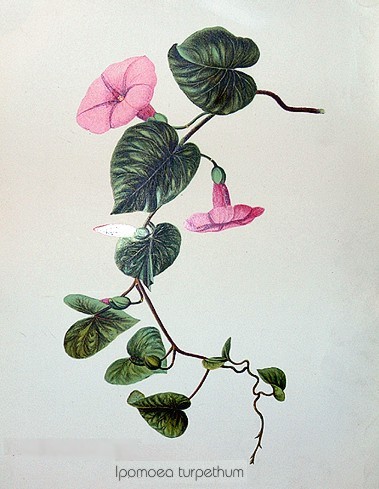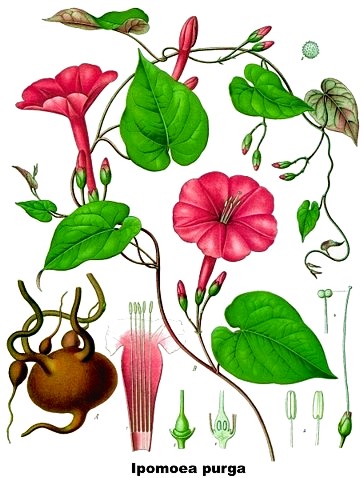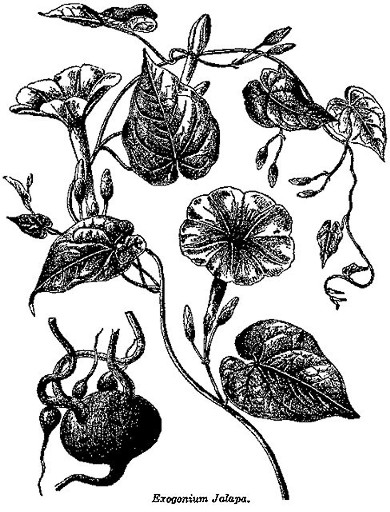Lessico
Turbitto
Gialappa indiana
Dall’arabo turbidh, nome di un’ombrellifera usata come purgante. Turbitto è il nome dato a prodotti chimici o vegetali:
Turbitto ammoniacale: antica denominazione del solfato basico mercuroso, usato in passato in medicina.
Turbitto minerale: precipitato giallo di solfato basico mercurico usato in dermatologia e in passato anche come purgante ed emetico.
Turbitto vegetale
Radice della Gialappa indiana - Ipomoea turpethum o Operculina turpetum Peter - una Convolvulacea di origine indo-australiana e detta pertanto gialappa indiana. Contiene una resina, la turpetina, che le conferisce virtù medicinali simili a quelle della gialappa messicana (Exogonium purga, anch'essa una Convolvulacea, ma originaria del Messico e delle Ande).

I tuberi della Gialappa messicana, Exogonium purga o Ipomoea purga. Convolvulacea del Messico e delle Ande, coltivata in tutta l'America Centro-Meridionale (San Felipe Jalapa de Díaz è una città messicana, ma Jalapa è anche una città del Guatemala). I tuberi contengono vari principi attivi resinosi di struttura glucosidica, tra cui la convolvulina, e costituiscono una droga (chiamata anch'essa gialappa) usata un tempo come purgante drastico contro la stipsi ostinata, come coadiuvante degli antielmintici e come decongestionante nell'ipertensione e negli edemi generalizzati.

Jalap is a cathartic drug consisting of the tuberous roots of Ipomoea purga, a convolvulaceous plant growing on the eastern declivities of the Sierra Madre Oriental of Mexico at an elevation of 5000 to 8000 ft. above sea level, more especially about the neighbourhood of Chiconquiaco on the eastern slope of the Cofre de Perote in the state of Veracruz.
Jalap has been known in Europe since the beginning of the 17th century, and derives its name from the city of Xalapa in Mexico, near which it grows, but its botanical source was not accurately determined until 1829, when Dr. J. R. Coxe of Philadelphia published a description.
The ordinary drug is distinguished in commerce as Vera Cruz jalap, from the name of the port whence it is shipped. Jalap has been cultivated for many years in India, chiefly at Ootacamund, and grows there as easily as a yam, often producing clusters of tubers weighing over 9 lb; but these, as they differ in appearance from the commercial article, have not as yet obtained a place in the English market. They are found, however, to be rich in resin, containing 18%. In Jamaica also the plant has been grown, at first amongst the cinchona trees, but more recently in new ground, as it was found to exhaust the soil. Besides Mexican or Vera Cruz jalap, a drug called Tampico jalap has been imported for some years in considerable quantity. It has a much more shrivelled appearance and paler colour than ordinary jalap, and lacks the small transverse scars present in the true drug. This kind of jalap, the Purga de Sierra Gorda of the Mexicans, was traced by Daniel Hanbury to Ipomoea simulans.
